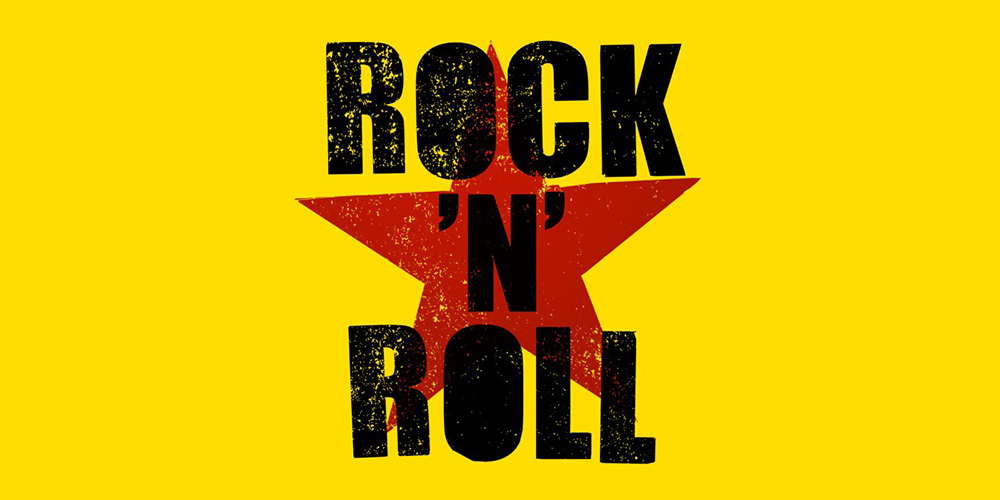(ThyBlackMan.com) Rock and roll, a genre that has shaped the musical landscape for decades, has roots that go deeper than most people realize. The story of rock and roll is a story of evolution, innovation, and the blending of different musical styles. And at the heart of this evolution is a rich tapestry woven by Black artists who, over the decades, contributed to what became the rock and roll we know today. This article delves into the early pioneers of rock and roll, with a particular focus on the Black artists who played instrumental roles in its birth and growth.

The Origins
Before delving into specific artists, it’s crucial to understand the origins of rock and roll. The genre emerged as a synthesis of several musical styles, including blues, gospel, jazz, and country. The term ‘rock and roll’ initially referred to the rhythmic motion associated with sexual activity, and it was a common phrase in many blues songs from the 1920s onwards.
Delta Blues and the Bedrock of Rock
The Mississippi Delta region played a crucial role in the development of the blues, a genre that provided much of the foundational elements of rock and roll. Artists like Robert Johnson, Charley Patton, and Son House produced haunting, raw, and emotionally charged music, characterized by its repetitive guitar patterns and soulful vocals.
Robert Johnson is often hailed as the “King of the Delta Blues.” Though he only recorded 29 songs before his untimely death at age 27, his influence is felt throughout rock music. Songs like “Cross Road Blues” and “Love in Vain” have been covered and reinterpreted by numerous rock artists, showcasing the timeless nature of his work.
Rhythm and Blues – The Direct Precursor
By the 1940s, ‘rhythm and blues’ (R&B) began to emerge as a distinct genre, incorporating elements of swing, gospel, and blues. This was the music that would directly lead to the birth of rock and roll. Notable Black artists in the R&B genre included Louis Jordan, Big Joe Turner, and Wynonie Harris.
Big Joe Turner, in particular, is a name that stands out. His 1954 hit “Shake, Rattle and Roll” is often cited as one of the earliest rock and roll songs. The song’s upbeat tempo, catchy chorus, and electric guitar riffs embodied the energetic spirit that would come to define rock music.
The Architect of Rock and Roll: Chuck Berry
If one were to single out a Black artist who could be credited with laying the groundwork for rock and roll, Chuck Berry would be that artist. His innovative guitar style, energetic performance, and clever lyrics set the standard for future rock musicians.
Songs like “Maybellene” (1955), “Roll Over Beethoven” (1956), and “Johnny B. Goode” (1958) showcased Berry’s unparalleled guitar skills and his ability to craft songs that resonated with both Black and white audiences. His influence on subsequent artists, from The Beatles to The Rolling Stones and beyond, is immeasurable.
Little Richard – The Flamboyant Pioneer
Little Richard, with his powerful voice, flamboyant stage presence, and dynamic piano playing, was another Black artist central to the early days of rock and roll. Songs like “Tutti Frutti” (1955) and “Long Tall Sally” (1956) captured the wild energy of rock and roll, breaking musical and cultural barriers.
Little Richard’s overtly theatrical style and androgynous image also paved the way for later rock artists, emphasizing the importance of showmanship in the genre.
Fats Domino – Bridging the Gap
Fats Domino, with his boogie-woogie piano style and warm vocals, helped bridge the gap between R&B and rock and roll. His song “Ain’t That a Shame” (1955) was one of the earliest rock and roll hits and showcased how R&B rhythms could be translated into the new genre.
Sister Rosetta Tharpe – The Godmother of Rock and Roll
While male artists often dominate discussions about the early days of rock and roll, it’s vital not to overlook the contributions of female artists. Sister Rosetta Tharpe, a gospel singer and guitar virtuoso, was a trailblazer in every sense. Her fusion of gospel vocals with electric guitar riffs in the 1930s and 1940s was revolutionary. Tharpe’s “Strange Things Happening Every Day” (1945) is considered one of the first rock and roll recordings.
The Continued Influence: Beyond the 1950s
While the 1950s are often seen as the golden age of rock and roll, the influence of Black artists in the genre did not end there. As the years progressed, the evolution of rock saw the continued contribution and transformation by Black musicians.
Jimi Hendrix – The Guitar God
As the 1960s dawned, a new force emerged on the rock scene – Jimi Hendrix. Often hailed as the greatest guitarist of all time, Hendrix’s innovative use of feedback, distortion, and pioneering techniques transformed the way the guitar was played. His performances at Woodstock and the Monterey Pop Festival are legendary, showcasing his unparalleled skills. With classics like “Purple Haze,” “Voodoo Child,” and his iconic rendition of “The Star-Spangled Banner,” Hendrix’s legacy is firmly cemented in rock history.
Funk and Psychedelic Rock
The late 1960s and early 1970s saw the rise of funk, a genre deeply rooted in Black musical traditions. Bands like Parliament-Funkadelic, led by the enigmatic George Clinton, blended rock, funk, and psychedelic music, creating a unique sound that would influence genres from hip-hop to modern rock.
Prince – The Multi-Instrumentalist Prodigy
The 1980s witnessed the rise of one of the most talented and versatile musicians in rock history – Prince. With his virtuoso skills on multiple instruments, especially the guitar, Prince blended rock, pop, funk, and R&B to craft a sound uniquely his own. Songs like “Purple Rain” and “When Doves Cry” exhibit his rock sensibilities, and his live performances were electric, showcasing his guitar prowess and unmatched stage presence.
Living Colour – Rocking Through the 80s
While rock music of the 1980s was dominated by hair metal and pop-infused sounds, Living Colour emerged as a force that harkened back to the roots of rock. Their blend of hard rock, funk, and socially conscious lyrics made songs like “Cult of Personality” anthems for a generation. Led by guitarist Vernon Reid, the band’s success further highlighted the enduring impact of Black artists in rock music.
Modern Rock and the African Diaspora
Recent decades have seen a resurgence in recognizing the contributions of Black artists to rock, both historically and in contemporary scenes. Bands like TV on the Radio, Alabama Shakes (fronted by the powerful Brittany Howard), and artists like Gary Clark Jr. have taken the rock mantle, blending traditional elements with modern sensibilities.
The British Invasion: Appreciation or Appropriation?
The 1960s also saw the rise of the British Invasion, with bands like The Beatles, The Rolling Stones, and The Yardbirds dominating the global music scene. These bands drew heavily from the works of earlier Black rock and roll and blues artists. The Rolling Stones, for instance, took their name from a Muddy Waters song and frequently covered tracks by Black American musicians.
While these British bands undoubtedly adored and respected the Black artists that influenced them, questions arise: Where is the line between appreciation and appropriation? The debate still rages on today, but it’s crucial to understand that the very foundation of much of the British Invasion’s sound was laid by Black artists.
The Evolution of Rock: Subgenres and the Black Influence
As rock music evolved, it splintered into numerous subgenres: punk, grunge, alternative, and more. And in each of these subgenres, the influence of Black artists can be found:
- Punk Rock: Bands like Bad Brains broke racial barriers in the predominantly white punk scene of the 1970s and 1980s. Their fast-paced tracks combined with reggae interludes showcased the versatility and range Black artists brought to the genre.
- Alternative and Indie Rock: The aforementioned TV on the Radio combined rock with elements of electronica, doo-wop, and more. Their eclectic sound, rooted in rock traditions but always pushing boundaries, exemplifies the innovative spirit of Black musicians.
The Future of Rock and Black Artists
The 21st century has seen a renewed interest in recognizing and celebrating the Black roots of rock music. Artists like Lenny Kravitz and Brittany Howard (of Alabama Shakes) are not only leading figures in contemporary rock but also vocal about their influences and the rich history of Black rock musicians.
Furthermore, initiatives like the Black Rock Coalition, founded by Vernon Reid of Living Colour, seek to ensure that the contributions of Black artists to rock music are acknowledged, appreciated, and continue to thrive.
Wrapping Up: A Legacy That Lives On
The tapestry of rock and roll is rich, varied, and colorful, with Black artists providing some of its most vibrant threads. Their stories, songs, and struggles are integral to the very soul of rock music. As we enjoy the electric riffs, powerful vocals, and pulsating rhythms of rock, it’s essential to remember and honor the pioneers, the trailblazers, and the unsung heroes who gave the genre its heartbeat. The legacy of Black artists in rock and roll is not just history; it’s a living testament to the enduring spirit of creativity, resilience, and revolution.
Staff Writer; Larry Jackson
This brother, and poet at heart can be reached at; LJJackson@ThyBlackMan.com.
















Leave a Reply